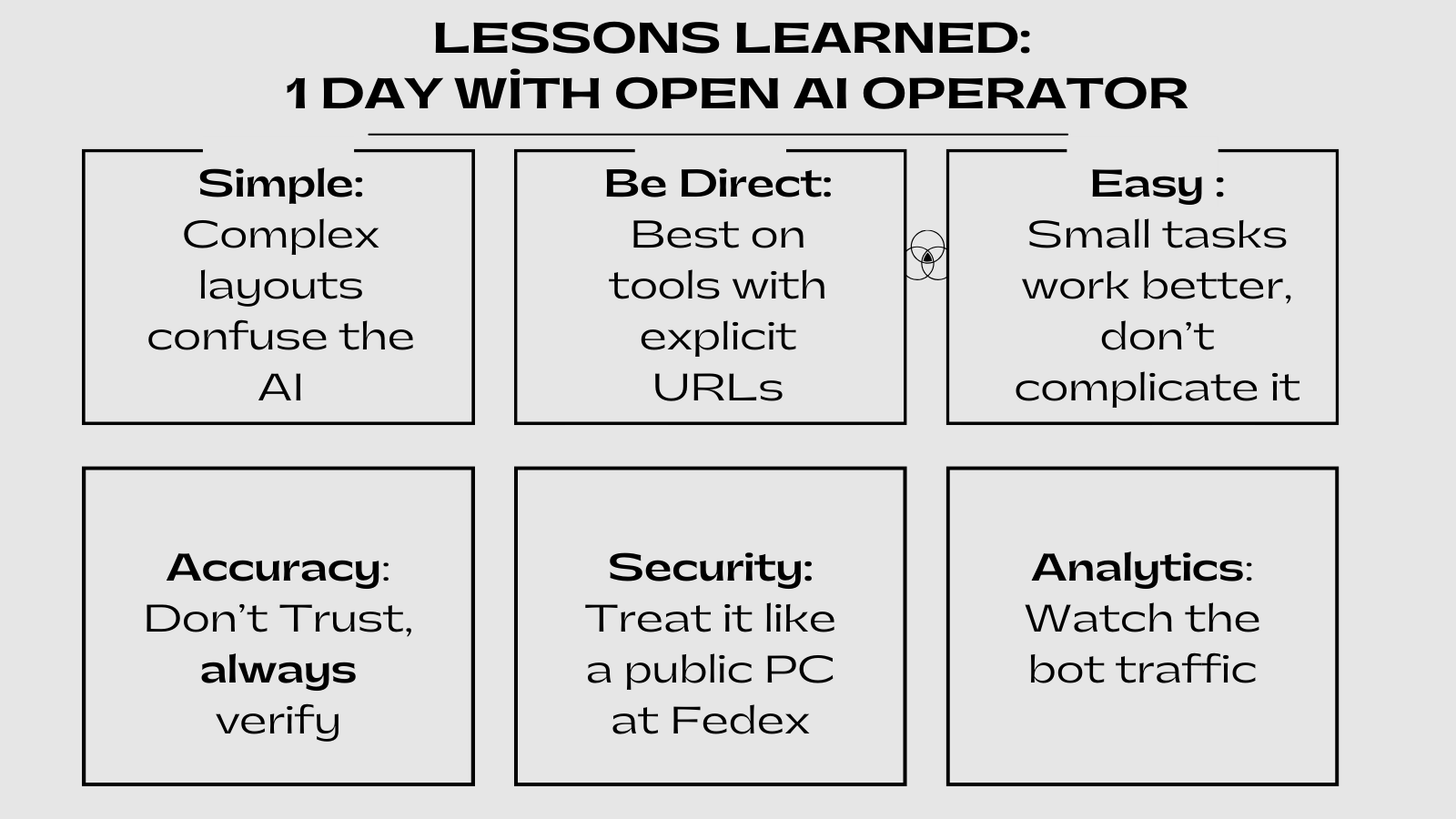If you’re turned off by the cheesy title and Harvard Business Review on the front cover, you’re going to miss out big time!
I’m a first-time manager, which means I’ll always have that Zen of “Beginners Mind.” In the mind of the beginner the possibilities are endless while in the mind of the expert there are few. Ranging from my Twitter profile to my outlook on life, I’m an underdog and I’m a student, eternally. I guess that is partially why I love marketing on the web, as no one really is a guru. We are actually all just students.
(departs soapbox)
This book was referred to me after a tweet that asked for recommendations for new managers fell flat. Someone at SEER noticed that it didn't get a lot of movement came over with 3-4 recommendations. Nicole, thank you! I have a feeling your study of management will help me many, many more times. ;)
Is This Book for You?
I read this book expecting to give it to my new managers but instead I found myself learning a lot, internalizing it, and seeking to become a better manager myself. If you struggle with the processes of management, this is a GREAT book for you. If in your soul you care deeply about people and have a desire to see them advance but don’t necessarily have the tools around you to learn, this book is for you. If you someday want to manage people, this book will help you enter into a “manager’s mindset.”
Goals
The book opens with a guide-to-goal setting, which is something I have struggled with a LOT. I’m more of a spiritual leader, but not as good with setting goals and sticking to them. Right off the bat it challenged me to ask myself: what goals am I setting for the company? More importantly, how do I know if we are accomplishing them?
It reminded me of this truth:
“The biggest obstacle to successful goal attainment is confusing on procedure completion with results.”
I saw this in my own organization a while back and had to make some tough decisions. I needed to hire a new mold of person. As a manager, your goal in a knowledge-based economy is to hire people who you can give a toolbox to and they can figure out which tools can fix the problem and get the job. By having people who always follow step a, then b, then c, you will have limited value in any organization where an industry is constantly changing.
Hiring
The first thing I loved in the chapter on on hiring hit home. With 4-10 people now involved in the hiring process, for myself and many of my teammates this is their first rodeo on hiring decisions. I am seeing way too much grilling on ability to work on “tasks to help me today” (thanks Saurav for helping me see that) versus people asking questions about someone’s aptitude and what they can do in the future if given the right training. All too often, new managers are hiring for perfection and not for someone’s potential. SEER is going to be working on alignment in the hiring process, and the first great tip to help with that is that before you get people coming in for interviews, have everyone who is going to be involved in the interview write down on a card what they believe the ideal candidate looks like. Then, before you begin the interview process, put everyone in a room and facilitate the conflicts between your team members’ thoughts on what their ideal candidate is. From there you can come to a consensus on what the ideal is and walk out having alignment for upcoming interviews.
Keeping People
In the keeping people chapter, I was reminded that people are more likely to stay to work with managers that they like and who support them. And don’t forget; C managers hire C talent. Its not to say that we don’t all make mistakes (heck I had to let go of 50% of my first hires early on.) I was a C manager because I was a new manager, but I was hell bent on getting better.
Delegation
Great managers realize that sometimes we have to delegate things we love to give others on your team an opportunity to grow, learn, and succeed on big visibility projects within the company. A manager that keeps the big visibility projects to themselves will struggle with helping and encouraging others to grow.
Here’s a great tip on delegation and managers: if there are tedious tasks you don’t like to do, “manager mindset” doesn’t want to just give it to someone else. Instead, dividing up the tedious tasks across the team and allowing everyone to hunker down, work on it, get it done, and not saddle any one person with it is the better way. I think there are so many kind people with so much pride in their work at SEER that we struggle with delegation, so this whole chapter is a worthy read.
As a manager, when you delegate tasks it’s your job to also ask what people might require to complete it. In that way they can have the opportunity to let you know what is needed. I think sometimes as managers, we delegate with little support. When delegating, it’s also part of your job to make sure the person you delegated to creates a win, a tangible success that connects with company objectives. This allows you to connect the dots for them on how a task connects with the larger company goals.
Another major learning. Start doing a managers’ job before you ask to become a manager. Lead things, connect dots, get shit done, mentor. If you keep doing your job as a “worker” while thinking that someday the heavens will part and you’ll get a chance to be a manager based on checking the boxes of your current job, you’re wrong. Like all things in life, you have to go and get it. So start being a manager today, without the title.
If you want to become a manager, you can start showing manager behavior in your job, and well before ever becoming a one. Here are a few tips from the book::
- Speak up in groups
- Deliver results
- Give both negative and positive feedback in group settings
- Make requests of upper management for what you need to achieve objectives (I call this managing up.) Never be nervous or scared to say what you need to complete a task; getting what you need helps the company and your upper manager hit their goals.
Page 108 has a great chart on things to do when you have problem team members who struggle with working in a team environment. It takes a very positive approach I highly recommend you read it.
Appraisal and Coaching
There are 5 steps to performance reviews and appraisals that will help you create processes and standards.
Be Prepared – This chapter and the next gave me plenty of food for thought on how to put the “employee first” in this process. In the preparation stage, the author advocated having the person first do a self appraisal that connects with company goals, and they should go through this appraisal before you say anything. Let them go first. If an team member cannot connect their self review items to company goals, then you have failed to connect those dots as a manager in your regular one-on-ones to make that connection. You can always work on that thought.
Conduct the appraisal – Something I never do (which helps create chaos) is to remind people of the role that reviews play including why we do them, what we hope will come of them, etc. It is setting the table and confirming expectations and I think the beginning of every appraisal should start with that reminder.
Performance Gaps – Once again, as your are doing the review think about where there are gaps in performance. Often, managers say “here’s how to improve,” but, the book reminds us to allow the employee to “go first.” Or in other words, where there are gaps, ask them why they think these gaps have occurred gives them an opportunity to explain rather than you jumping in with your take on the situation.
Find Root Causes - This section was good for me because it reminded me to dig in more and avoid generalizations, yes/no questions, etc.
Closing the gap – By now I started to get a feel for how this book was working. To close the gap you have to create a plan, and that plan and its goals have to be specific, have timelines, action steps, expected outcomes, and training if need be.
The book does a great job of separating management versus coaching, and I think it’s critical for someone to know the difference. Coaching is more about exploring and facilitating rather than directing.
There was a great reminder in this chapter to not hold your team to the same standards as yourself. Very often you are in a managerial position because you exceeded expectations and have a great track record of success. But using yourself as a yardstick to your teams’ success often leads to serious disappointment, and it’s not fair. I know I am guilty of having done this in the past and have had advisors tell me the same thing.
The next chapter was all on dealing with problem teammates, and I think all new managers must read this because it’s guaranteed to happen. The only control you have is how you are going to deal with it. One major thing in the 10 points was to remind the problem teammate how their lack of performance impacts you, and more importantly the team. More than likely a problem employee has less concern for how their shortcoming impacts you, but they might not want to be putting their co-workers in a bad place.
Again, there were some basics here, but one of the points was to remember to give bad news in rooms with no glass because if an employee becomes upset, it’s possible that people can see. Small tip, but one I know I have broken this rule at least 2-3 times and I’ll never do it again. Talking too much in a meeting to part ways only opens you up to more liability, so keep it short and concise.
Crisis
Every business and every team is going to have them, so this chapter was all about preparing for crisis in advance, which I learned a LOT from.
They recommend creating an audit of all the things that could go wrong in your business (this could be appropriate for SEER):
- Losing a big client / project
- Losing a critical team member
- Theft / Embezzlement
- Business Unit Failure
- PR nightmare
Page 157 had some great examples.
After a crisis do a post-mortem, asking yourself and your team:
- Knowing what we know now, could we have prevented this? How?
- At what point did we realize we were in a crisis? Could we have realized earlier?
- What warning signs were ignored?
The next chapters were on how to improve and direct/manage your own career growth and how to do it. The authors recommend getting your own, personal “board of advisors.” These are people who can advise and guide you. It could be an executive in the company, but it may not be. The final section ends with reading financial statements so I skipped it, but for a new manager thinking about costs and revenues is a CRITICAL part of how you should make pitches to upper management.
The characteristics of great managers is also revisited. It was a good reminder and checklist to have. So, I strongly recommend this book both for first-time managers and also for people who have done it for a while, as there are some great refreshers in here. I also think if you ever want to become a manager, you could use this to create a blueprint.



